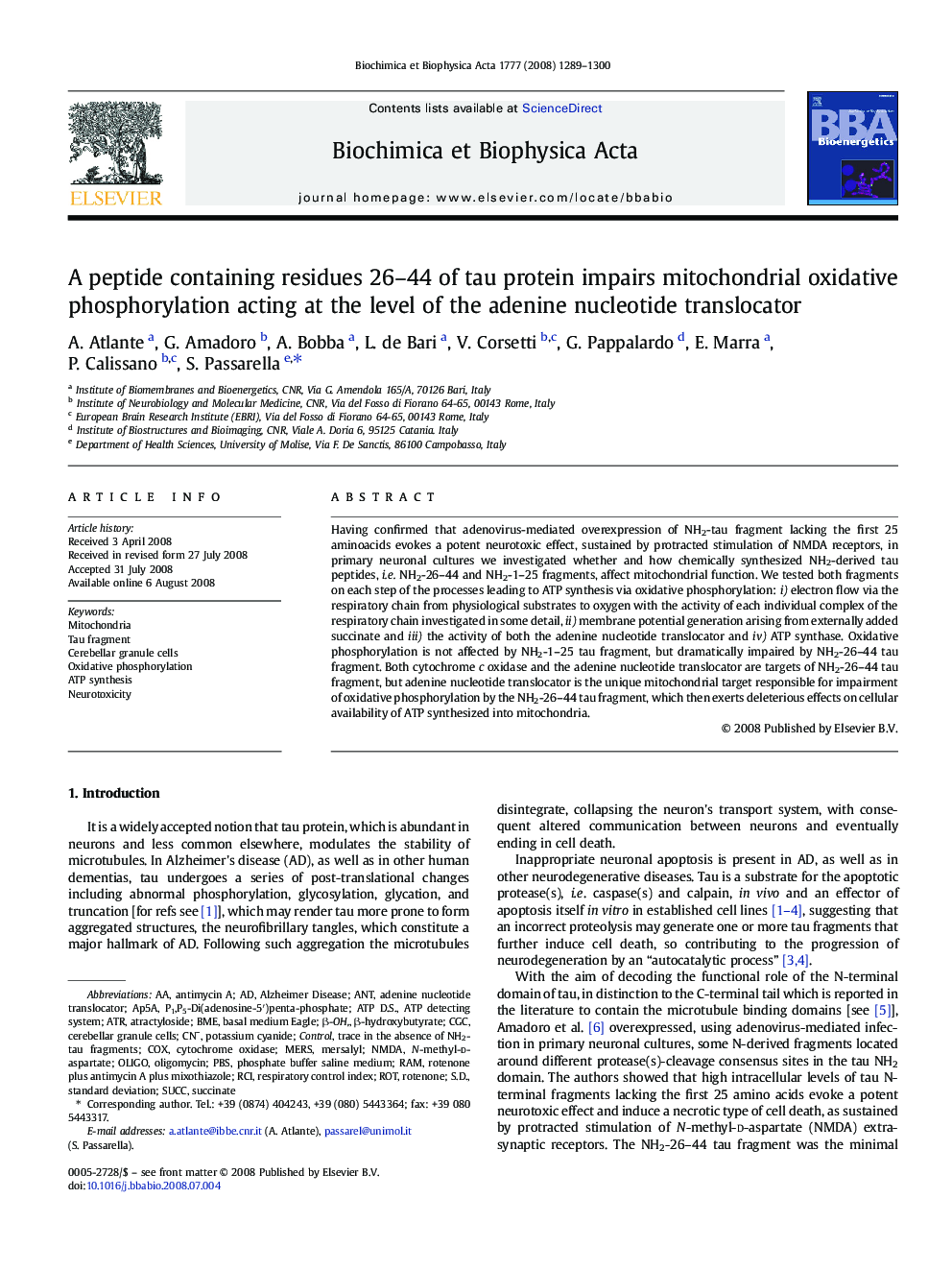| Article ID | Journal | Published Year | Pages | File Type |
|---|---|---|---|---|
| 10796041 | Biochimica et Biophysica Acta (BBA) - Bioenergetics | 2008 | 12 Pages |
Abstract
Having confirmed that adenovirus-mediated overexpression of NH2-tau fragment lacking the first 25 aminoacids evokes a potent neurotoxic effect, sustained by protracted stimulation of NMDA receptors, in primary neuronal cultures we investigated whether and how chemically synthesized NH2-derived tau peptides, i.e. NH2-26-44 and NH2-1-25 fragments, affect mitochondrial function. We tested both fragments on each step of the processes leading to ATP synthesis via oxidative phosphorylation: i) electron flow via the respiratory chain from physiological substrates to oxygen with the activity of each individual complex of the respiratory chain investigated in some detail, ii) membrane potential generation arising from externally added succinate and iii) the activity of both the adenine nucleotide translocator and iv) ATP synthase. Oxidative phosphorylation is not affected by NH2-1-25 tau fragment, but dramatically impaired by NH2-26-44 tau fragment. Both cytochrome c oxidase and the adenine nucleotide translocator are targets of NH2-26-44 tau fragment, but adenine nucleotide translocator is the unique mitochondrial target responsible for impairment of oxidative phosphorylation by the NH2-26-44 tau fragment, which then exerts deleterious effects on cellular availability of ATP synthesized into mitochondria.
Keywords
COXphosphate buffer saline mediumATP detecting systemATP D.S.SuccAp5ARCIoligomycinantimycin Aβ-hydroxybutyrateBMEN-methyl-d-aspartateNMDAPBSATRANTCN−CGCmERsS.D.atractylosideoligostandard deviationAlzheimer diseaseadenine nucleotide translocatorRamRotRotenonecerebellar granule cellsNeurotoxicityATP synthesisSuccinatecytochrome oxidaseRespiratory control indexbasal medium EagleOxidative phosphorylationMersalylMitochondriapotassium cyanideControl
Related Topics
Life Sciences
Agricultural and Biological Sciences
Plant Science
Authors
A. Atlante, G. Amadoro, A. Bobba, L. de Bari, V. Corsetti, G. Pappalardo, E. Marra, P. Calissano, S. Passarella,
